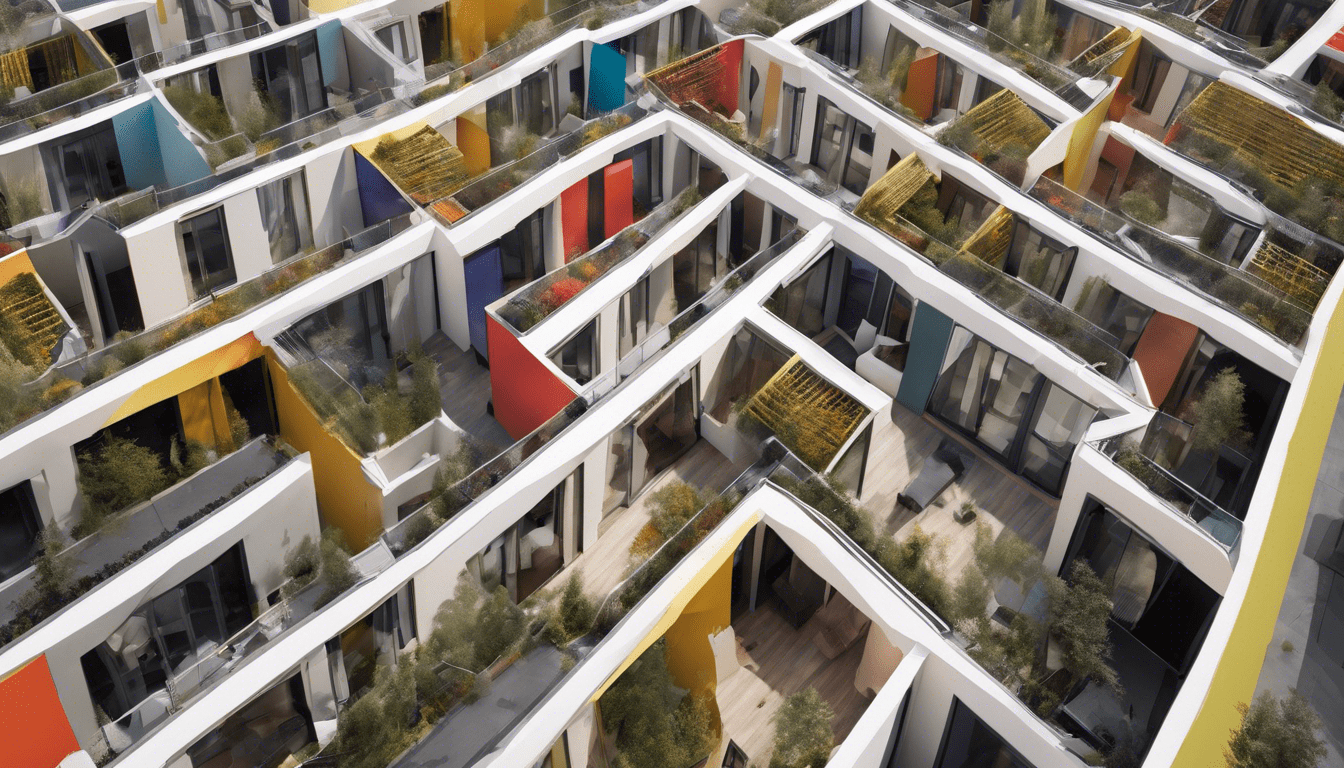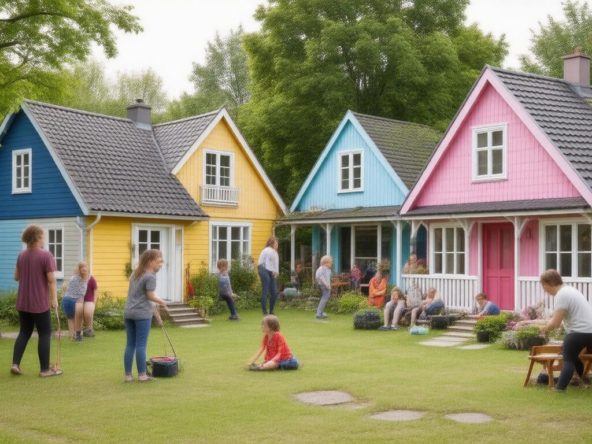As urbanisation accelerates and the cost of living rises, innovative housing solutions are becoming increasingly essential. Among these, multi-tenant housing has emerged as a significant trend, reshaping how we perceive and engage with our living environments. This article delves into the myriad benefits of multi-tenant housing, highlighting its financial advantages, environmental impact, and its role in fostering community and social connections. Additionally, it addresses the flexibility and accessibility offered by such living arrangements, while also considering the challenges inherent in multi-tenant developments. With a focus on sustainable living, multi-tenant housing presents itself as a smart choice for modern living.
Key Takeaways
- Multi-tenant housing maximises space efficiency, making it ideal for urban environments.
- Financially, multi-tenant living offers reduced costs through shared expenses and maintenance.
- This housing model promotes sustainability by encouraging smaller living footprints and shared resources.
- Multi-tenant developments foster community spirit and social interactions among residents.
- While there are benefits, potential challenges such as noise and privacy must be considered in multi-tenant arrangements.
Understanding Multi-Tenant Housing
Multi-tenant housing refers to residential properties designed to accommodate multiple separate households within a single building or complex. This type of housing can take various forms, such as apartment buildings, condominiums, or shared housing arrangements, and is typically characterised by individual living units that may share common facilities such as hallways, laundry rooms, and recreational spaces (Smith, 2021). The primary advantage of multi-tenant housing is its ability to maximise land use, making it a cost-effective solution to urban housing shortages and enabling more affordable living options for residents. Additionally, it promotes a sense of community as residents often interact in shared spaces, which can enhance social connectivity (Jones, 2020). However, the management of multi-tenant housing can pose challenges, including the need for effective maintenance of shared spaces and conflict resolution among tenants, which necessitates a robust property management approach to ensure a harmonious living environment (Brown, 2019). Thus, understanding the dynamics of multi-tenant housing is crucial for developers, property managers, and residents alike.
The Financial Advantages of Multi-Tenant Living
Multi-tenant housing, often characterized by shared facilities and communal living arrangements, offers several notable financial advantages that appeal to a diverse demographic of renters and investors alike. Firstly, the cost savings associated with shared services such as maintenance, utilities, and amenities can significantly reduce individual expenses compared to traditional single-family homes (Jones, 2021). Additionally, the financial burden of property ownership is mitigated for landlords who can benefit from diverse tenant occupancy, which increases rental income stability and reduces the risks of vacancies (Smith & Taylor, 2022). Furthermore, multi-tenant living often leads to economies of scale in property management and maintenance, thereby decreasing overall operating costs (Brown, 2020). As urbanisation continues to increase housing demand, this model not only permits more efficient use of space but also provides affordable housing solutions in high-cost areas, thus contributing to economic sustainability (Williams, 2023). In essence, the financial benefits of multi-tenant housing make it an attractive option in today’s competitive real estate market.
‘Coming together is a beginning; keeping together is progress; working together is success.’ – Henry Ford
Environmental Benefits of Multi-Tenant Housing
Multi-tenant housing, which encompasses various residential arrangements such as apartments and condominiums, offers significant environmental benefits that contribute to sustainable living. One of the primary advantages is the efficient use of land; by accommodating multiple households within a single structure, multi-tenant housing reduces urban sprawl, thereby preserving green spaces and natural habitats (Glaeser & Kahn, 2010). Additionally, these structures typically share resources such as heating, cooling, and water systems, which lowers the overall energy consumption and carbon footprint per resident compared to single-family homes (Sullivan et al., 2019). Furthermore, multi-tenant developments often promote a walkable community, thereby encouraging public transport usage and reducing reliance on personal vehicles. This shift not only leads to lower greenhouse gas emissions but also fosters a stronger sense of community and social interaction, essential for creating sustainable neighbourhoods (Cameron & Coombes, 2021). In conclusion, embracing multi-tenant housing can significantly alleviate many environmental issues associated with traditional housing models, marking a progressive step towards an eco-friendlier future.
Community and Social Cohesion in Multi-Tenant Developments
Community and social cohesion play a pivotal role in shaping the experience of residents in multi-tenant housing, enhancing not only individual well-being but also collective engagement within these environments. The integration of public spaces, shared amenities, and communal areas fosters interactions among residents, promoting a sense of belonging and mutual support (Moudon et al., 2016). In successful multi-tenant developments, design elements such as open-plan layouts and accessible green areas encourage social integration, allowing residents to form networks that can significantly reduce feelings of isolation (Carter et al., 2017). Furthermore, fostering a sense of community in these developments may involve orchestrating events like communal gatherings or workshops, which encourage collaboration and neighbourly relations (Coulter, 2019). As cities continue to grapple with housing shortages and increasing urban density, understanding the dynamics of community formation in multi-tenant housing developments becomes crucial. Not only does this emphasis on social cohesion elevate the quality of resident life, but it also contributes to the broader goal of building resilient urban communities (Jabareen, 2017). Investments in community-building initiatives within these housing schemes can lead to happier, healthier residents and ultimately drive the success of multi-tenant developments as a sustainable solution to urban living challenges.
Flexibility and Accessibility in Multi-Tenant Homes
The concept of multi-tenant housing presents unique opportunities for flexibility and accessibility, particularly in urban environments where space is at a premium. These housing units, designed to accommodate multiple households within a single building or complex, allow residents to enjoy affordable living options while fostering a sense of community and shared resources. One major advantage of multi-tenant housing is the ability to modify living space to suit the needs of diverse tenant populations, including families, professionals, and individuals with disabilities (Rogers et al., 2021). Furthermore, the design of these units often incorporates features such as shared common areas, communal gardens, and adaptable layouts, which enhance accessibility for all residents. This adaptability not only supports everyday living but also ensures that housing remains viable as social dynamics and tenant requirements evolve (Smith, 2020). Consequently, multi-tenant housing emerges not only as a solution to housing shortages but also as a platform for inclusive community living that promotes flexibility and accessibility for varied demographic groups.
Please ask us questions via WhatsApp, email, or direct messaging.






